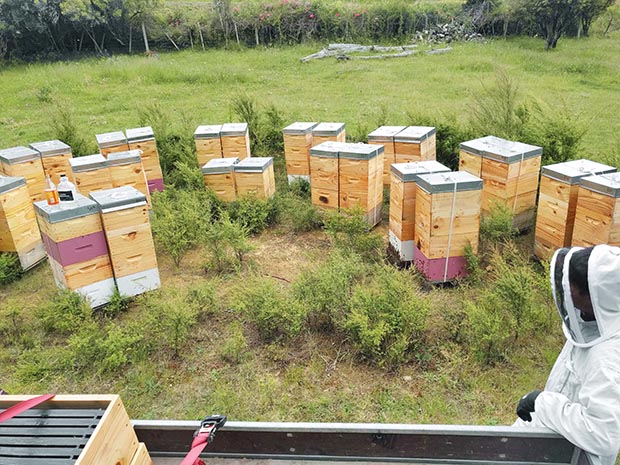3 common concerns about hosting beehives

What about swarming? Will I get stung? Will there be bees in the house?
Words: Karen Knight
SWARMS
This is a natural phenomenon in bees. It occurs in late spring (November mainly) when the bees get busy making babies and out-grow their home. Half the hive takes off to find a new place to live, as a swarm. In well-managed hives, the beekeeper will notice signs of build-up and split the hives before things become critical. They don’t want to lose their bees any more than you want a swarm.
But even in the best circumstances, a few swarms may happen. Generally, bees that are swarming are very docile and are far more focused on finding a new home than stinging you. Just keep away, and let your beekeeper know.
STINGS
Bees sting, but only if you bother them. If you leave them to their own devices, they are unlikely to be interested in you. Have a box of strong antihistamines on hand just in case. If you need to mow near a hive, it’s best to do this just on dark when the bees will be putting themselves to bed, but look out for the bee flight path (which is wind dependent) so you don’t travel through it and get hit by bees coming home.
WAYWARD BEES
No-one wants bees inside. A good beekeeper will site the bees away from your house. But sometimes your house is directly between the hive and the food source, and you end up on the flight path. If this is a problem, let your beekeeper know and they should deal with it by moving the hives.
Love this story? Subscribe now!
 This article first appeared in NZ Lifestyle Block Magazine.
This article first appeared in NZ Lifestyle Block Magazine.
